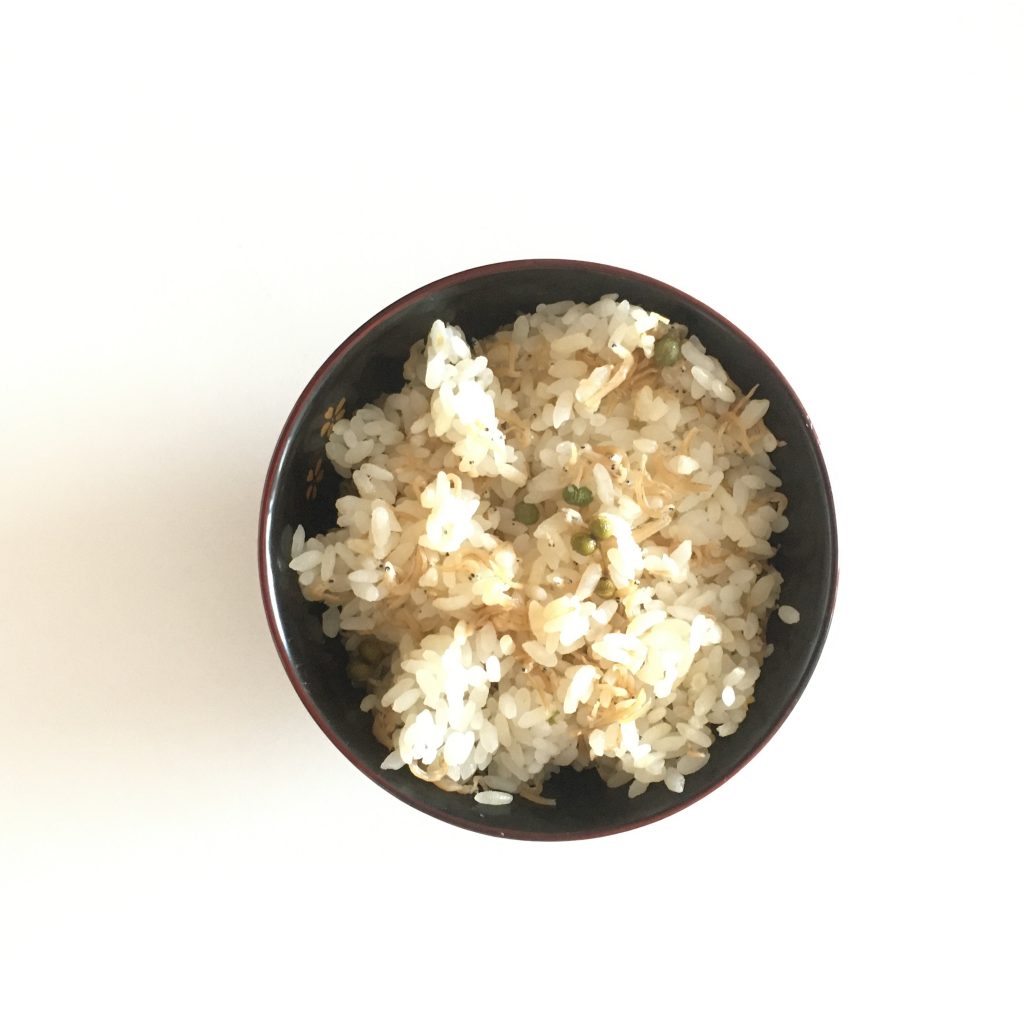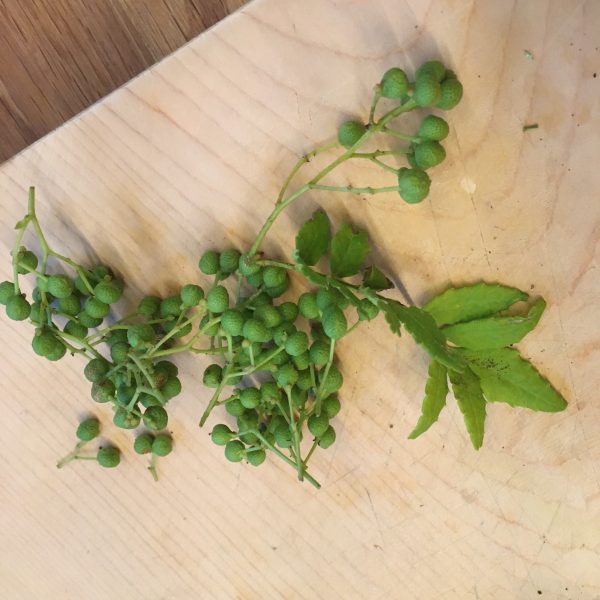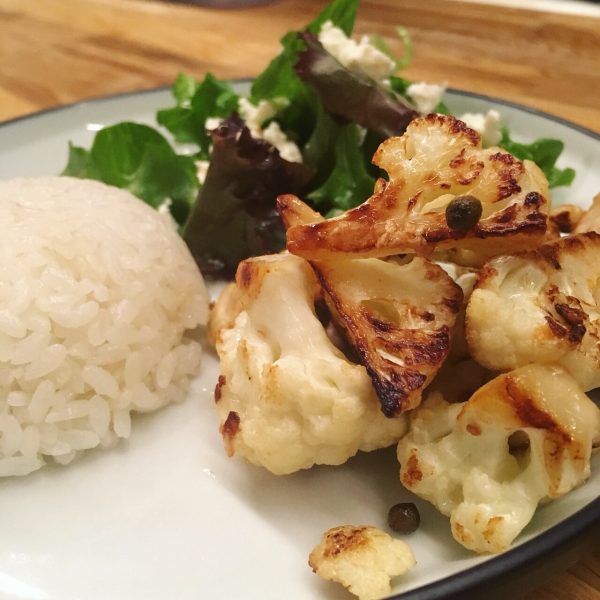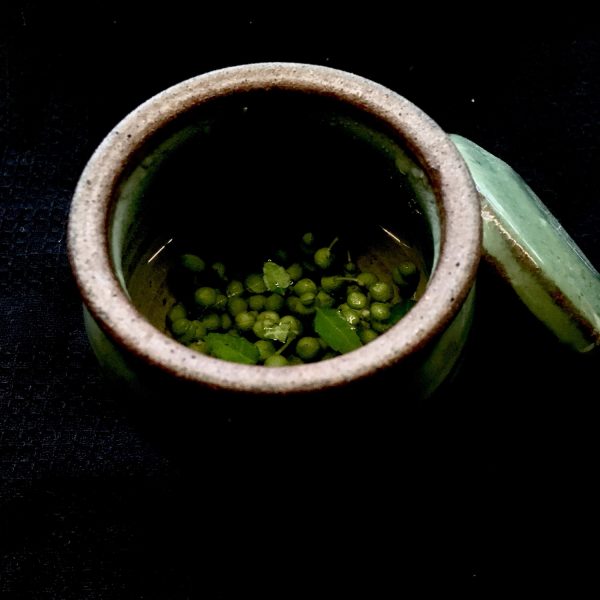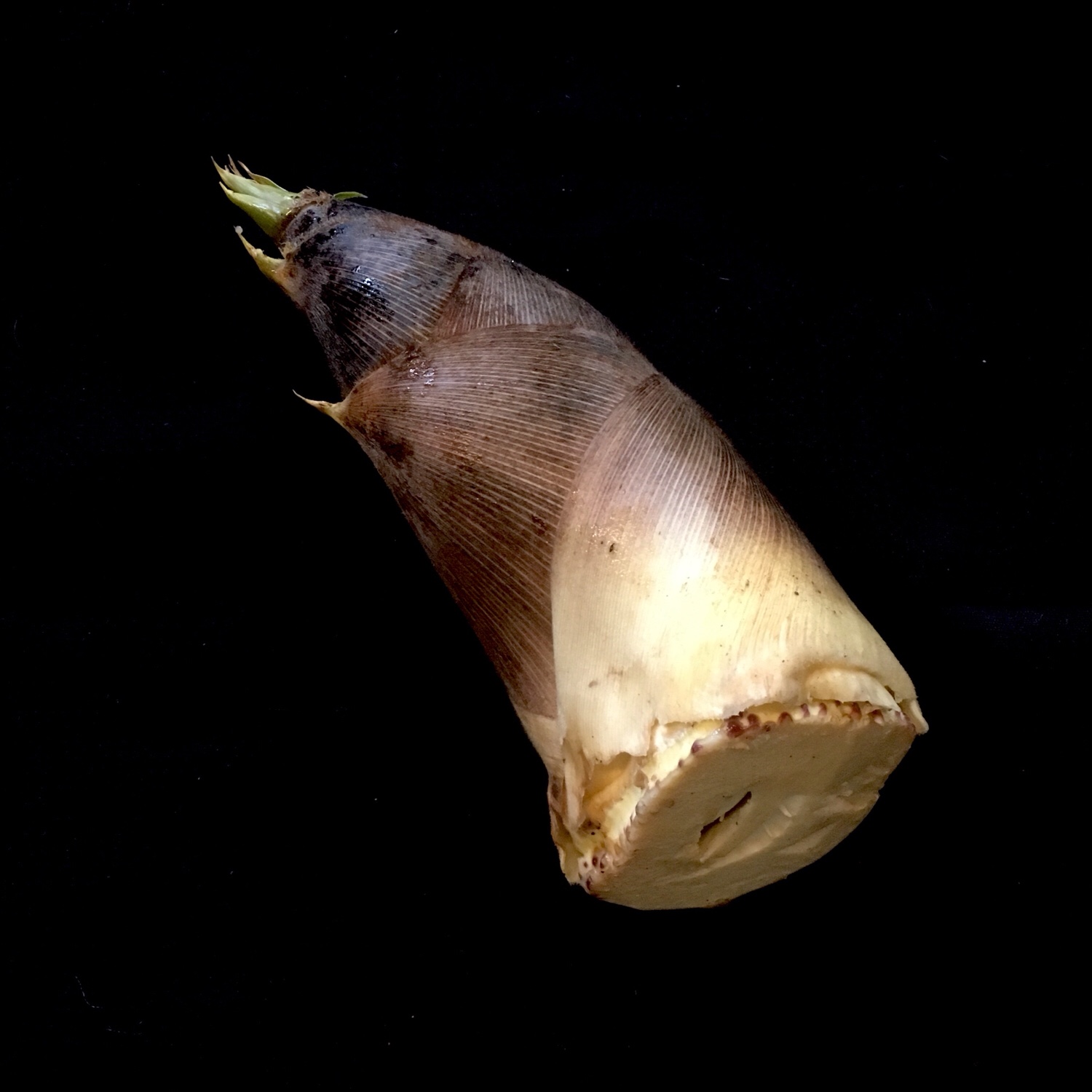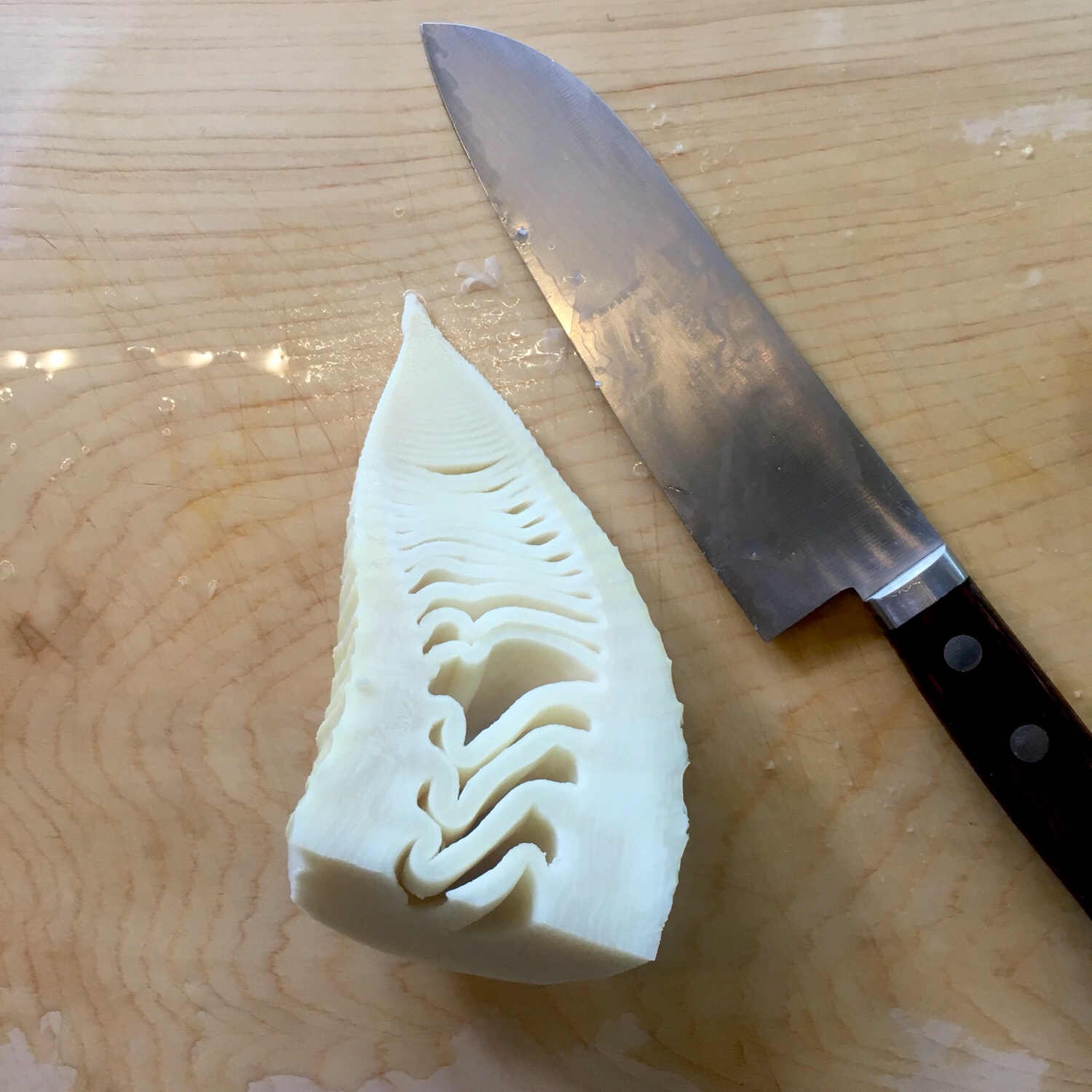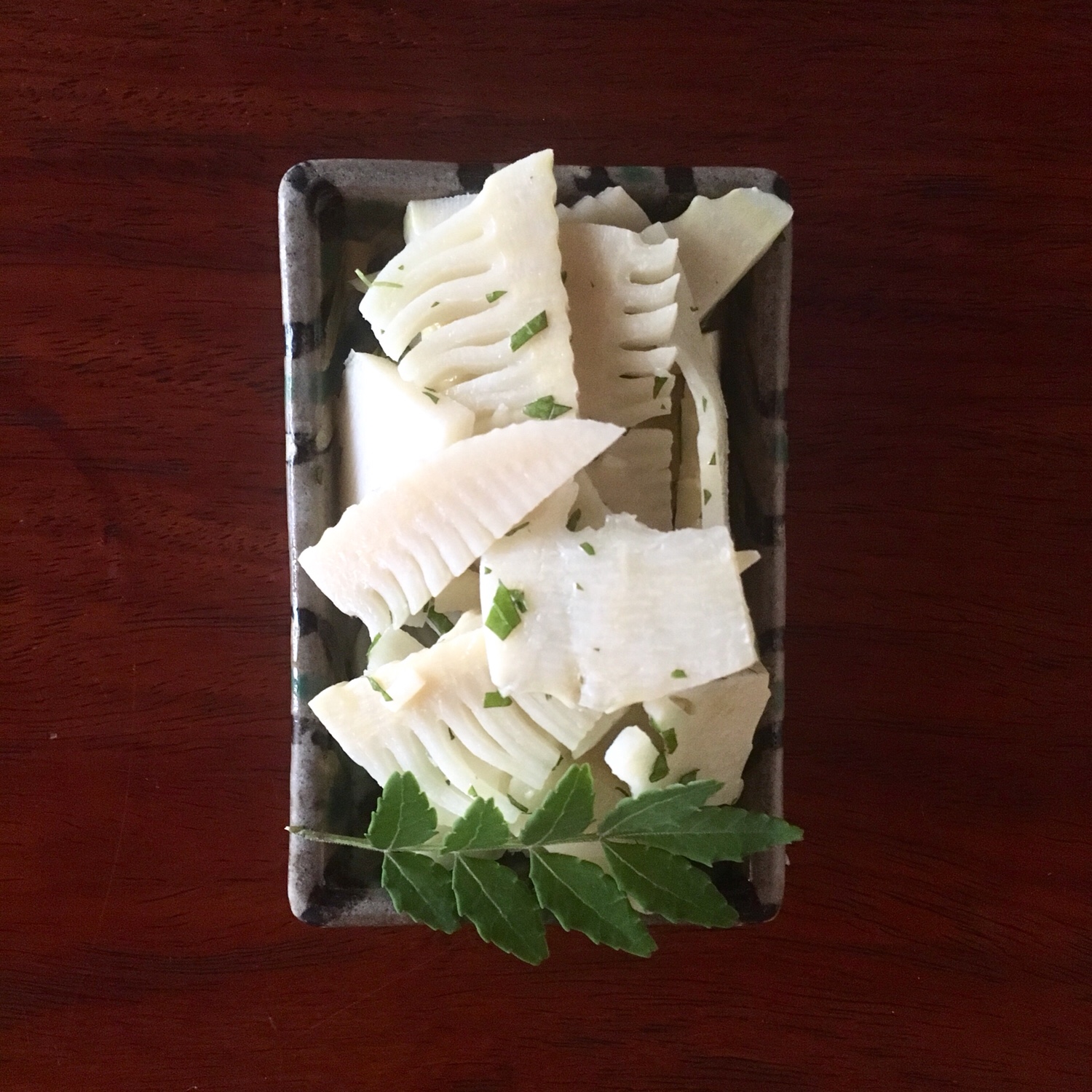This shrub looks like nothing particular in the garden, yet it bears fragrant leaves and fruits. It is sansho -山椒 or Japanese pepper.
I planted the tree the very first spring we started our kitchen garden, and without failure it has produced the fragrant leaves we often eat during early spring with bamboo shoots, and later in June the little tiny fruits that are so recognizable in Japanese cuisine. The shrub grows steadily and the fruits are very fertile meaning you have sansho in the garden and don’t harvest the fruits, they will quickly sprout everywhere! So I devoutly harvest them for our own usage and to give away.
I particularly love one recipe of sansho that comes from shojin cuisine. It just blends the typical Japanese flavors or soya sauce, sake and konbu with sansho. It is very simple to prepare and can keep forever in the fridge. Which means you can harvest your sansho, prepare this recipe and eat sansho all year round until the next harvest. So here is the recipe. I love it with plain white Japanese rice and dry chirimen.
Sansho preserve
- 1/2 cup of fresh sansho seeds
- 1/4 cup of soya sauce
- 1/4 cup of sake
- 8 pieces of konbu of 1.5×1.5cm
Wash the sansho and remove the stems. Put all the ingredients in a small pan and cook at low heat under cover until the liquid is just enough to keep everything moist. Let cool down. Put in a clean jar and keep refrigerated. Use whenever you want. Isn’t that sinple!
